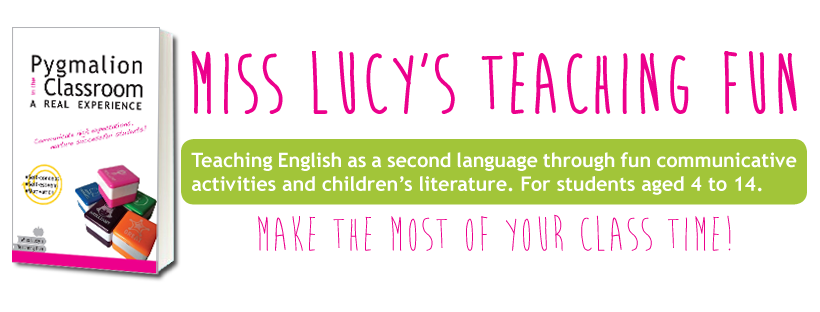Today I'm talking about the second book of Cat and Mouse, edited by Anaya, that invite our young learners to get to know the animals!
As animals are their favorite subject at this age (3-4-5) you won't have any problem capturing their total attention.
 |
| Meet the Animals Cover |
Exactly like in the previous one, Cat and Mouse - Learn the Colours!, we'll meet again the main protagonists, the big-headed orange cat and the little squeaky mouse, but this time they will introduce us to some farm and jungle animals.
The dialogue structure is repetitive and catchy and apart from animals' names we'll also discover their noises. Do you know what kind of noise a sheep makes?
After reading it I added some more activities as always.
First of all I seized the moment to teach the most appropriate song 'Old MacDonald' mentioning the farm animals we saw in the book.
I used this song during the next classes to play 'Musical Chairs' and the 'Statue Game': they were allowed to dance when the music was on but they had to freeze in position and hold it when the music was off.
Then I stuck some flashcards representing the animals from the book on the wall and lined my kids up into two queues. When I called out an animal they had to run towards the right card and touch it.
You can also make the noise and they have to say the name and touch the corresponding animal.
Another game they love is performing the animals. Make them sit on the floor in a semicircle, call a student out, show him a card. He has to perform the animal and the rest of the class has to guess the animal performed.
Afterwards you can play again the "I spy" and "I can see a…across the sea" games.
Finally if you have worksheets to color, that will help too.
This book has also a CD that you can use to make them listen and repeat.
Actually it contains a lot of nature's sounds and my pupils enjoyed it quite a lot.
I still haven't tried the 'Theatre', but I've already noticed them saying stray sentences from the book, so I imagine it's not going to be difficult to arrange it.




